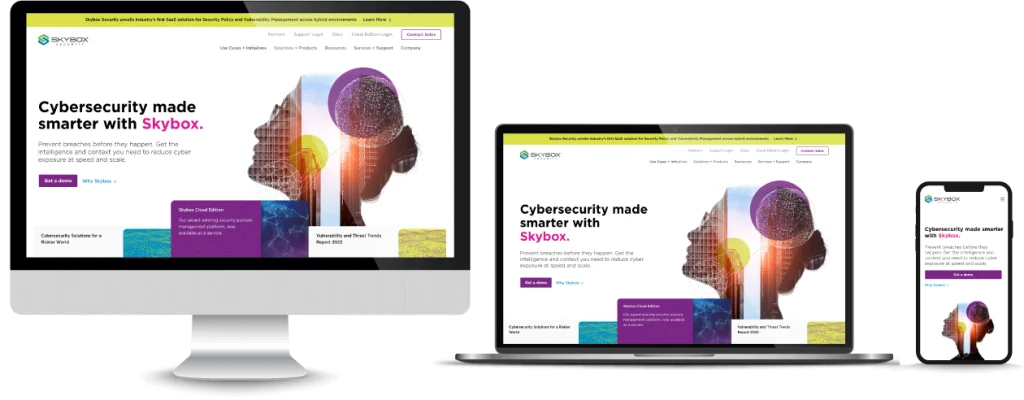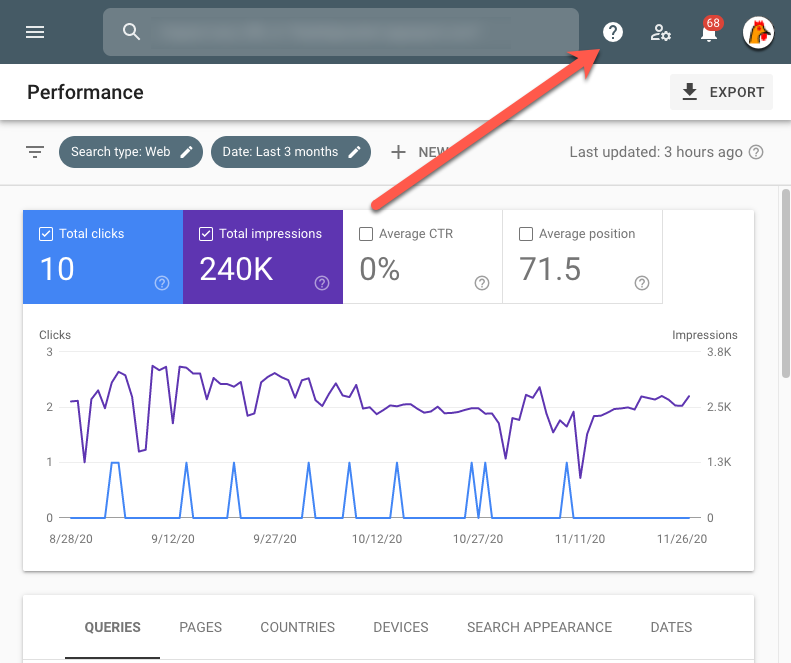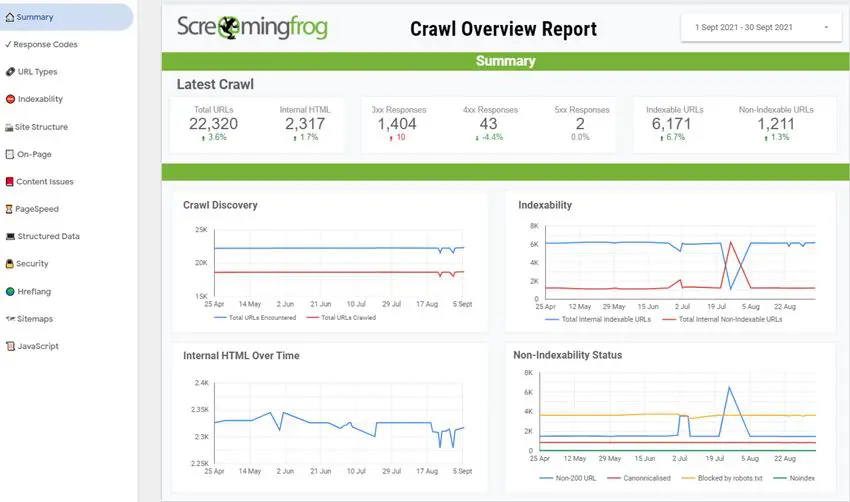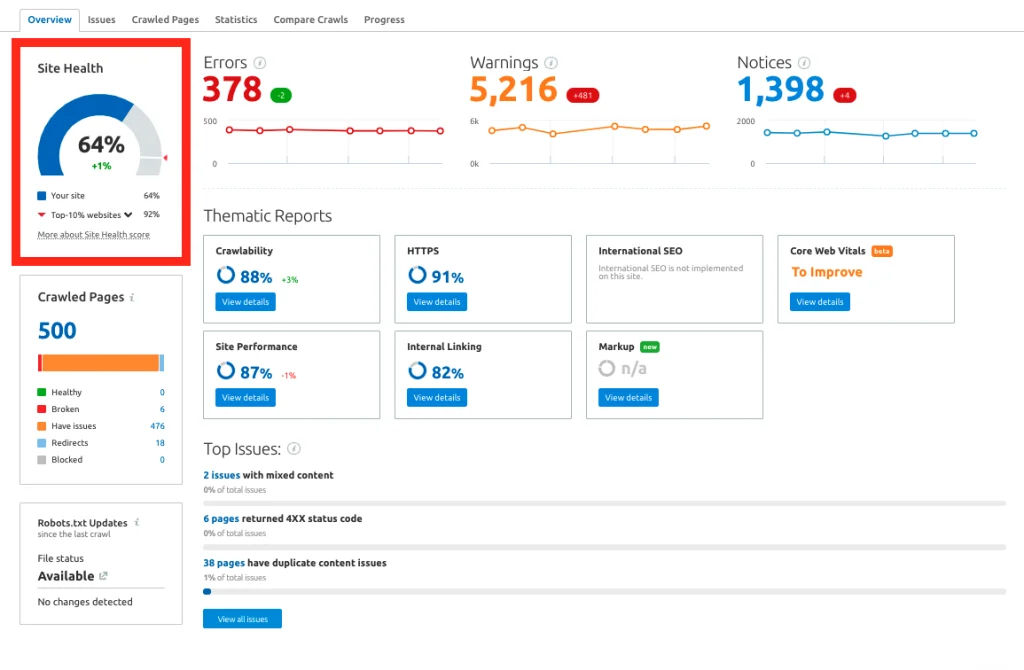In this post, we share our fundamentals on understanding SaaS technical SEO, including the benefits of technical SEO and what tools to implement to help with your technical SEO audit.
There are roughly 16,000 SaaS companies in the United States alone, generating a total revenue of about $389.3 billion. With this kind of competition, having a significant online presence is your best bet at standing out. That’s where SaaS technical SEO comes in.
When done well, SEO not only increases your site’s visibility – it drives meaningful traffic from search engines, builds brand trust and increases your sales and cash flow. In this guide, we’ll walk you through the top benefits technical SEO has to offer SaaS businesses and all of its fundamentals that can improve your business results.
What Is SaaS Technical SEO?
The goal of technical search engine optimization (SEO) is to enhance the technical aspects of your website in ways that will help it to gain higher rankings on search engines like Google and Bing. These technical aspects include factors like:
- Site speed and load times
- Your site’s structure
- The site’s performance across varying device types, especially the mobile version
- Ensuring your site is free of coding errors, duplicate content and other issues that could be impacting its performance
Regardless of the quality of your content marketing, your SaaS website needs to be accessible to search engine crawlers, or no one will ever find it. But why is its specific ranking position so important? Consider the following:
- Less than 1% of people who conduct a Google search click on the second page of Google search results.
- The top organic (or non-paid) search result is 10 times more likely to be clicked on than the 10th result on the search engine results page (SERP).
- Your click-through rates can increase by 2.8% just by raising your ranking by one spot.
Technical SEO is critical for SaaS businesses because it drives users directly to your website, which offers the potential of converting visitors into paying customers. Your SEO strategy can be the difference between whether customers seek out your services first or go with a competitor.

Benefits of SEO for SaaS Businesses
Aside from increasing your visibility, claiming a top spot on SERPs for specific search queries offers the following benefits for your SaaS business.
1. It helps you establish an online presence.
When done right, technical SEO draws more users to your web page and, likewise, to your products and services. It allows you to show up more prominently and frequently for the right customers at the right time.
Additionally, effective technical SEO not only enhances your website’s visibility and drives targeted traffic but also plays a crucial role in improving the overall user experience on your website.
By optimizing various technical aspects of your site, such as page speed, mobile responsiveness, and structured data, you create a seamless and engaging environment for visitors.
When your website loads quickly, functions flawlessly on mobile devices, and provides well-structured content, users are more likely to stay longer, explore multiple pages, and ultimately convert into paying customers.
This positive user experience not only boosts your SEO efforts and website’s performance but also contributes to higher user satisfaction, leading to repeat business and positive word-of-mouth referrals.
2. It builds brand awareness and trust.
The more potential customers see your website in their search engine results pages, the more familiar they become with your company and services, building your brand. When users begin to recognize your name and company, their trust in your company’s authority and authenticity builds.
It takes an average of five to seven impressions before someone will remember a brand, which is why frequency in search results is so important. Additionally, 83% of consumers say they will only purchase from a brand they trust, and 90% are willing to pay more when they trust the brand.
3. It enables you to reach more people.
SaaS technical SEO enables you to reach a broader audience than traditional marketing initiatives by serving your company up to consumers regardless of whether they fit your ideal customer persona or where they are in the sales funnel. Targeting keywords in place of demographics can open up doors to atypical customers who may be interested in doing business with you.
Technical SEO takes this audience expansion a step further by leveraging the power of search intent. Unlike traditional marketing strategies that often target specific demographics, SaaS technical SEO focuses on understanding user intent behind search queries.
This approach enables you to capture potential customers who might not fit the typical mold but are actively seeking solutions related to your product or service.
4. It increases lead generation.
With a solid online presence, a larger audience and more significant brand awareness, you will begin to attract more relevant organic traffic, thus generating more leads.
As your online presence strengthens through your website’s technical SEO and the expanded reach it provides, you’ll find that not only is your brand reaching a larger audience, but also that this increased exposure translates into a steady influx of more relevant and engaged traffic.
This surge in quality traffic is a direct result of your website being positioned to appear prominently in search rankings for a broader range of search queries related to your industry, products, or services.
5. It improves customer engagement.
Customers who are directed to your SaaS website through your technical SEO strategy are there because they are looking for something specific. If your products and/or services meet their criteria, they are more likely to truly explore what you have to offer, increasing engagement opportunities like:
- Clicks
- Downloads
- Shares
- Scheduled consultations
- Demo requests
6. It leads to increased revenue and a higher ROI.
All of these benefits ultimately lead to what most SaaS companies are looking for – a significant payoff. With a larger pool of engaged customers, you will likely see a steady increase in leads through your SaaS website and an improved ROI when you invest in quality technical SEO.

SaaS Technical SEO Checklist
Of course, the countless benefits of technical SEO can only be achieved if your website is optimized correctly. SaaS technical SEO requires knowledge and understanding of essential components, such as the following:
- Crawl errors
- Site load times
- Website architecture
- HTTPS status codes
- “Orphan” pages
- Broken links
- URL structure
- Meta descriptions length
- Keyword research
- Content optimization
- Link building
- Duplicate content
- Canonical tags
- Internal linking structure
- core web vitals (loading performance, site interaction, and visual stability)
While there are a lot of components of technical SEO, here’s what you need to know about the four most important elements of impactful technical SEO for SaaS businesses.
1. Search Engine Crawling and Indexing
SaaS technical SEO is closely intertwined with search engine crawling and indexing, as it directly impacts how search engines discover, analyze, and include your SaaS site’s content in their search results. Let’s explore this relationship:
Crawling
Search engines use bots, also known as crawlers or spiders, to navigate the web and gather information from websites. These bots follow links from one page to another, effectively “crawling” through the structure of your website. SaaS technical SEO ensures that your website is easily crawlable by search engine bots. This involves optimizing your site’s architecture, ensuring a logical and organized hierarchy of pages, and fixing any technical issues that might hinder crawling, such as broken links or inaccessible content.
Indexing
Once search engine bots crawl your SaaS website, the information collected is stored in the search engine’s index, a massive database of web content. This index is used to quickly retrieve relevant results when users perform searches. Effective SaaS technical SEO ensures that your content is properly indexed.
This includes optimizing meta descriptions, using descriptive and relevant titles and headings, and creating a sitemap to guide search engines to important pages.
The indexed pages will have a higher likelihood to get shown on search engines. It’s important to have your content indexed, but you will also want to ensure you have quality keyword research and implementation on your web pages in order to show up in more prominent search rankings.
XML Sitemaps
Sitemaps play a critical role in search engine crawling and indexing. An XML sitemap is a file that informs search engines of the roadmap of your site structure, highlighting the important pages. By creating and submitting an XML sitemap, you help search engines crawl and index your SaaS website more efficiently. The sitemap tells search engines any changes that have occurred with your site’s structure and/or content.
2. Site Architecture
When it comes to SEO, your site’s architecture and user experience (UX) go hand in hand. A technical SEO-informed architecture can improve your website’s UX design by:
- Creating easy navigation
- Helping users quickly find the information they’re looking for
- Developing an easy-to-follow page hierarchy
- Incorporating internal links to relevant content
- Creating clear calls to action (CTAs)
- Avoiding broken links and load errors that may cause users to leave your site
Conversely, a well-designed website focused on UX can improve web traffic by:
- Increasing engagement
- Establishing a clear purpose for your site
- Generating more conversions
- Increasing your credibility
- Building your brand
3. Page Speed
Page speed is one of Google’s main determining factors in search engine rankings. Almost 70% of consumers say that page speed impacts their decision to buy from an online retailer, and pages with the highest e-commerce conversion rates are the ones that load within 2 seconds.
A slow page speed will put you behind competitors in search engine rankings and lose you money by driving potential customers away from your site.
4. Website Security
When it comes to website security and SaaS technical SEO, it’s important to look at factors that affect the connections to your website, links embedded within your website, and the types of transactions and engagement taking place on your website.
This approach ensures that users of your site remain safe and prompts Google to positively influence your rankings.
Ways to Improve Your SaaS Technical SEO
Now that you understand the elements and benefits of technical SEO for your SaaS website, it’s time to learn how you can improve your business through technical SEO.
Use SEO Tools Like Google Search Console

Image via support.google.com
Google Search Console is a free service offered to assist you in managing, troubleshooting and auditing your site’s technical SEO performance.
By using this SEO tool for your SaaS business, you can:
- See how often your site appears in Google searches
- Collect data on which search queries are driving the most traffic
- Get alerts when Google discovers technical SEO issues with your site
- Learn which sites link back to your website
- Manage your technical SEO optimization
This information can be used to inform your SaaS technical SEO strategy, boost your organic search traffic and avoid fatal errors that could drive away business. To thoroughly use this tool, follow these steps:
- Verify Your Website: First, you need to verify ownership of your website in Google Search Console. This involves adding a specific code snippet or a meta tag to your website’s code, or using other verification methods provided by Google.
- Submit Your Sitemap: Submit your XML sitemap to Google Search Console. This helps Google understand the structure of your website and ensures that all your important pages are indexed.
- Monitor Index Coverage: In the “Index” section, go to “Coverage.” This shows you the status of the pages Google has indexed and any issues it encountered while crawling your site. Look for errors, warnings, and excluded pages.
- Identify Crawl Issues: Use the “Crawl” section to access the “Crawl Errors” report. This report highlights crawl issues such as 404 errors, server errors, and other problems that may prevent Google from properly indexing your site.
- Mobile Usability: In the “Enhancements” section, check “Mobile Usability.” This report shows mobile-specific issues that might affect your site’s performance on mobile devices. Google’s mobile-first indexing makes this crucial.
- Check Core Web Vitals: In the “Enhancements” section, review the “Core Web Vitals” report. This report measures key user experience metrics, such as page loading times and interactivity. Google considers these metrics in its search ranking.
- Backlinks: The “Links” section provides information on external links to your site. While it’s not as comprehensive as dedicated backlink analysis tools, it can still give you an idea of who’s linking to your content.
- Manual Actions: Check the “Manual Actions” section to see if Google has applied any manual penalties to your site. Address any issues specified there to improve your site’s search ranking.
- URL Removal: Use the “Removals” tool to temporarily remove specific URLs from Google search results. This is useful if you need to remove outdated or sensitive content.
- Structured Data: If your site uses structured data, the “Rich Results” or rich snippets report in the “Enhancements” section can show you how your structured data is performing in search results.
Check Page Position
Page position, or ranking, is extremely important for SaaS technical SEO. You want to rank as high as possible so that search engine users will feel confident that your site provides the information, products or services they are searching for. Improving your ranking will put you a step – and a page position – ahead of your competitors.
You can use Google Search Console to check your page position by following these steps:
- Select the web domain you want to check from the upper left menu
- Go to Search Results
- Look for the right-most square – that’s your average position over time
You can also see your keyword rankings by:
- Scrolling below to Queries to view the keywords you’re ranking for
- Filtering by position to see your top keyword for a specific page
Build & Submit Your Sitemap
Simply put, a sitemap is an archive of your site’s most important pages.
Building and submitting your sitemap to search engines is the best way to ensure that your site architecture is understood and that your website can quickly and easily be crawled, increasing your page position.
According to Google, you have three ways to submit your sitemap:
- Submit a sitemap in Search Console using the Sitemaps report. This will allow you to see when Googlebot accessed the sitemap and also potential processing errors.
- Use the Search Console API to programmatically submit a sitemap.
- Use the ping tool. Send a GET request in your browser or the command line to this address, specifying the full URL of the sitemap.
Google Analytics
In addition to Google Search Console, it’s crucial to understand your site’s health and data on Google Analytics to get a big picture of how your site is performing. Here’s a step-by-step guide to leverage Google Analytics for this purpose:
- Set Up Google Analytics: Ensure that it is properly set up on your website. If you haven’t done this yet, create an account, obtain the tracking code, and install it on all pages of your website.
- Monitor Organic Traffic: In Google Analytics, go to the “Acquisition” section and select “All Traffic” and then “Channels.” Look specifically at the “Organic Search” channel. This will show you the traffic coming from search engines.
- Check Bounce Rates: Analyze the bounce rate of landing pages. High bounce rates may indicate issues such as slow loading times, poor user experience, or irrelevant content.
- Examine Site Speed: In the “Behavior” section, go to “Site Speed” and select “Page Timings.” This will show you the average page load times. Slow loading pages can negatively impact SEO.
- Review Mobile Performance: Google Analytics provides insights into mobile traffic and user behavior. Go to “Audience” > “Mobile” > “Overview” to see mobile performance data. Check for any mobile-specific issues.
- Analyze User Engagement: In the “Behavior” section, you can analyze user engagement metrics like time on site, page views per session, and conversion rates. Poor engagement could be due to technical issues.
- Regular Audits: Perform regular technical SEO audits using the data to identify any emerging issues and track the impact of your technical SEO improvements.
Remember that while Google Analytics provides valuable insights, it’s essential to combine this data with other SEO tools and manual checks to get a comprehensive understanding of your technical SEO performance.
Run a Screaming Frog Report

Image via screamingfrog.co.uk
Screaming Frog is another great service to have in your box of SEO tools. Screaming Frog is an SEO website crawler that helps monitor common SEO issues and allows you to enhance your on-page SEO.
A Screaming Frog report can:
- Check for broken links
Broken links may communicate to search engines that your website is old and outdated. Screaming Frog bulk exports these errors and source URLs to fix or send to your web developer. - Uncover duplicate content
When a site has duplicate content, search engines get confused on which page to rank highest, and you end up competing with yourself. Screaming Frog uncovers both exact and partially duplicate pages as well as duplicate headings and descriptions through an algorithmic check. - Audit URL redirects:
URL redirects are a way of forwarding users from one URL to another when the old URL no longer exists. Screaming Frog locates both temporary and permanent redirects and can identify a list of URLs that should be audited during a site migration.
Other capabilities include:
- Analyzing page titles and metadata
- Generating XML sitemaps
- Crawling JavaScript websites
- Scheduling automatic crawling audits
- Visualizing site architecture with interactive diagrams
Run a Site Health Report

Image via www.semrush.com
Site health reports help you monitor how your website is doing. You can use SEO tools like SEMRush to uncover site errors and warnings.
A SEMRush site health report will provide you with a technical audit and give you insight into factors that affect your search engine rankings, such as your site’s structure, security, speed and overall SEO rating. This information can be used to make comparisons to competitor sites and establish a standard health status for your website.
Elevate Your SaaS Website with Technical SEO
The world of SaaS is littered with competition. Technical SEO can help ensure your SaaS business is the first one users discover when searching for relevant products and services. This investment pays for itself.
If you’re ready to take your SaaS technical SEO to the next level to elevate your sales, we can help. At Motion Tactic, we are a SaaS SEO agency and we specialize in building sites that will grow your software or technology business. Schedule your consultation now.


